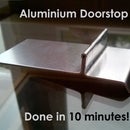Introduction: Les Paul Switch Replacement
Maybe you want to upgrade the switch on your guitar, or maybe you've got a broken one. Replacing bits is part of the life of a guitarist, sometimes you'll knock something or just suffer 'case gremlins' - in this instance, I bought a B-stock Les Paul with some damage - including a snapped-off switch. This is a very easy job to replace it and can be done in less than an hour with simple tools - the only tool you need that not everyone has is a soldering iron.
My guitar is an Epiphone Les Paul Standard Pro, but all LP type guitars feature a very similar build style so it should apply to lots of guitars.
I started by removing the old switch, there are special tools to undo the round nut, but if you are careful you can use pliers. The switch will then drop into the body of the guitar - I also took this opportunity to remove the Rhythm/Treble ring as I prefer the look without it.
Step 1: Getting Into the Electronics
Remove the two cavity covers on the back of the guitar with a Phillips screwdriver - note which way up the switch is, so you can put it back without reversing the Rhythm/Treble positions. On mine, the 3 wires go at the bridge end.
Epiphone makes this job easy by having the switch plug into the rest of the electronics. This allows you to move the switch further away from the body during soldering - other guitars are also easy but you have to do it closer to the body.
The switch I used was a cheap one from Amazon - £6 for two, including a free (but terrible) pick. Good ones can be bought from places like Allparts for about £15. The Epiphone uses the short version, but check what your guitar has before getting one. There are also long ones and right angle ones available.
Word of warning - if you do have a plug in switch, make sure you tie some thread round the plug before you pull it through, so you can pull it back into position easily afterwards - see the attached image.
Step 2: Soldering
The soldering equipment you need is a soldering iron and solder - I also had a iron cleaner, tinner and a support. If possible, desolder the existing connections rather than cutting the wires, but take a photo of the setup before so you have a record of which wire goes where. There are four parts to connect, the red, white and green wires for the pickups and the shielding, which connects at the other end of the switch. Check out the photos for more detail.
A bit of theory now... The red and green wires come from the pickups, but after they have gone through the volume and tone circuits (for this guitar, at least). The white wire takes the selected pickups signal and goes back to the main electronics cavity to be sent out of the output jack. The shielding is there to reduce that annoying hiss you get from electrical interference (such as lights, power sockets etc.) and to stop that beeping noise you get when a phone interferes with audio equipment. The switch is unusual in electronics terms as in the central position, both sides are 'on' - most general use toggle switches have the centre position as 'off' so you do need to make sure you get the right one when buying, but anything you get from a guitar/music shop should do the job.
If you are good with soldering, feel free to skip to the next step. Otherwise...
As a VERY basic soldering guide, set up both parts of the joint (i.e. hold it in something so both your hands are free), hold the iron against the joint for a couple of seconds, add the solder and hold for a few more seconds then release. If the joint is shiny and smooth to the surface it is good - if it is dull and collected in a ball on the surface, then it is a dry joint and will not stick or conduct properly, so pull it off and try again. If you're unconfident, try a few practice joints on some old/cheap/spare wire first, rather than your pride-and-joy instrument... Connecting the shielding to the switch (the one at the other end to the red, white and green wires) is tricky and needs lots of heat to make it stick.
Step 3: Done!
To paraphrase a much better guide writer than myself - "Reassembly is the reverse of the previous".
For such a small job, it makes the guitar look new again - or at least it would if the top didn't have a chip in it... Check out the video if you want to hear me cycle through the pickup options, but be warned, I'm not a very good player yet. It has not affected the sound of the guitar at all, so despite being cheap, this switch is good enough to do the job.
Thanks for reading, I'm open to questions in the comments or DMs. Happy guitaring!

Participated in the
Fix It Contest













